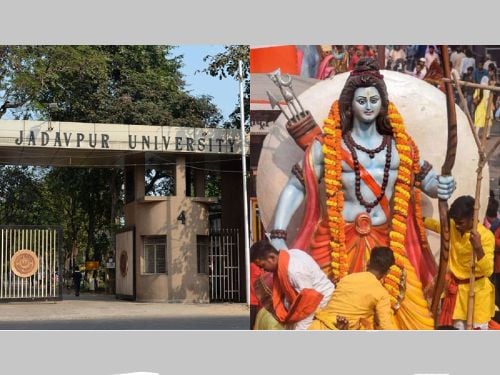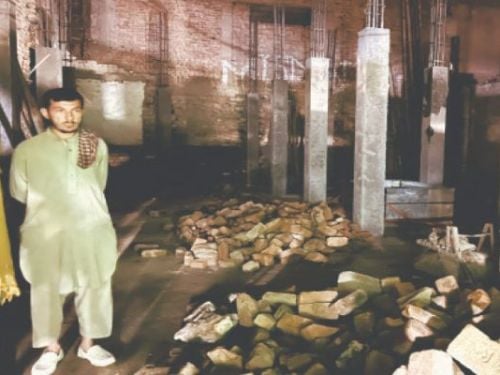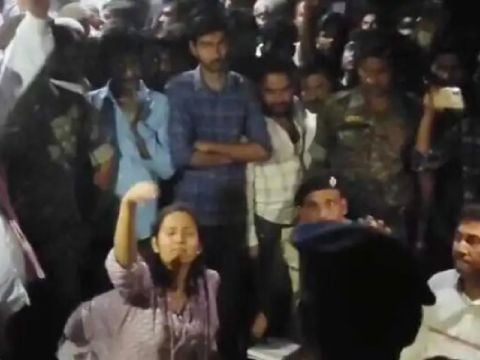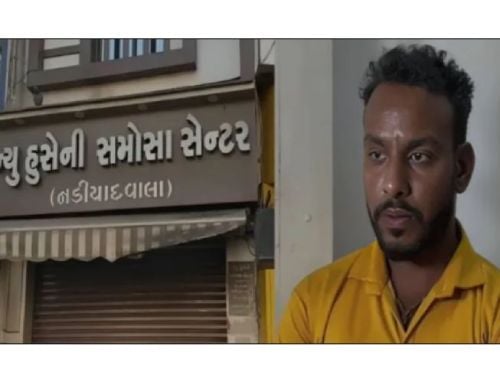An article based on the religious conversion that is on in India. The methods adopted by missionaries to convert people. Who comprise the mass most lured into conversion? How does this affect the Indian culture? Does this affect the culture at all? Bangalore, August 1: Janmashtami, September 2004, the Infant Jesus Church Complex, Bangalore held a week-long festival during which a tent was set up in the community with long tables and benches and a shrine of Infant Jesus at one end.
The sides of the tent were covered with pictures of Meera, one of Krishna’s greatest devotees, accompanied by peacocks. Meera seemed to be adoring the Infant Jesus, who wore a small peacock feather in his crown. It appeared that the residents of Koramangala were thus, being led to believe that Infant Jesus was the reincarnation of Krishna ( very similar to stamp controversy of UK )
Most of the dwellings in the locality are thatch huts or small houses erected with mud and used pieces of bricks and stones. Many of the nicer houses, built with new bricks, cemented and painted, are owned by recently converted Christians. They are given generous amounts of money for converting. The road leading to the Infant Jesus Church is proposed to be named “Infant Jesus Road”. The street earlier had a Hindu name.
The situation at the St. Mary’s Cathedral Complex, Shivaji Nagar is no different. Two hundred people, mostly belonging to the lower strata of society, have been converted about a week ago. It has been learnt that a plan has been made for converting more Hindus in the area.
Austin Town and Ulsoor are other well known hubs of conversion activities. They even have small community halls where sermons and other get-together’s take place. The missionaries’ strategy is well planned. They refrain from coercion but it’s the vulnerable (read unsuspecting Hindu) mind set that is played on. They are either manipulated or lured into Christianity.
Christian missionaries are all over Bangalore, preaching that Hinduism is an error and Christianity is the only true religion. They move from place to place like vendors of goods. They have no special spiritual merit that distinguishes them from the commoners. They however possess material goods which they promise to those who join their fold.
Recently, in Orissa, a missionary descended on a famine area with money in his pocket, distributed it among the famine stricken, converted them to his fold, took charge of their temple, and demolished it. He promised the converts material benefit and assured continued support if they attended Church.
It is an accepted fact today that fringe church groups are converting scores of Hindus to Christianity across India. In many South Indian villages, religion has boiled down to money. Flushed with funds from their headquarters in the United States, a number of church groups are converting hundreds of Hindus, especially those belonging to the low castes.
In Madurai, a year ago, around 250 villagers – all of them poor Dalits underwent baptism by water and converted to Christianity. The ceremony was conducted by the Seventh-Day Adventists Missionaries. In the span of six months after this mass conversion, reports say, Seventh-Day pastors have converted as many as 2,000 Hindus to Christianity in the Madurai region.
At around the same time, the Covenant and High Land Trinity, a church group working in Andhra Pradesh’s Guntur district, converted 70 Hindu villagers. Reports said that all the converts were paid money and given jobs for changing their religion. In the latest of a series of conversion in Kerala, two dozen Hindus in a poor mason’s colony outside Pathanamthitta town were converted to Christianity allegedly under the influence of a charismatic Christian prayer group called Master Ministry of Jesus. Church insiders admit that church groups with plenty of foreign money have mushroomed all across South India with conversion as their main agenda. "They have exotic names like Exodus Church, New Life Evangelists, Covenant and High Land Trinity, Master Ministry of Jesus etc. They reject church rituals. They are very Westernized and fundamentalist," a senior Pastor, on the condition of anonymity, revealed.
An American missionary, Mr. Cooper came to India on a tourist visa, which prohibits missionary work. During his stay in Kerala, he overtly indulged in missionary activities and so was asked to leave the country for violating visa rules. The episode brought to light a plethora of facts. According to the residents of the Kilimanoor Dalit hamlet, Cooper spewed venom against Lord Krishna and attributed the modern scourge of AIDS to the avatar of a bygone yuga. Press reports suggest that around the same time, another foreign missionary in the area was hounded out by local residents for making derogatory remarks against Lord Ayyappa, the pre-eminent deity of the state.
[Mahatma Gandhi’s] message from Young India, speaks the minds of many, “I hold that proselytisation under the cloak of humanitarian work is unhealthy to say the least. It is resented by people here. Religion after all is a deeply personal thing. It touches the heart. Why should I change my religion because the doctor who professes Christianity as his religion has cured me of some disease, or why should the doctor expect me to change whilst I am under his influence? ”

 Jadavpur Univ revokes permission to celebrate Ram Navami on campus after granting it
Jadavpur Univ revokes permission to celebrate Ram Navami on campus after granting it Andhra Pradesh: Farooq kills mentally challenged Hindu man for insurance money
Andhra Pradesh: Farooq kills mentally challenged Hindu man for insurance money Pakistan: Ancient Hindu temple in Khyber Pakhtunkhwa demolished for commercial complex
Pakistan: Ancient Hindu temple in Khyber Pakhtunkhwa demolished for commercial complex UK: Over 50 children were sexually abused by paedophile catholic monks for decades
UK: Over 50 children were sexually abused by paedophile catholic monks for decades Bihar: Goddess Bhagavati Temple in Araria vandalised and deities damaged
Bihar: Goddess Bhagavati Temple in Araria vandalised and deities damaged Vadodara: Beef supplier Imran Qureshi arrested in beef-stuffed samosa case
Vadodara: Beef supplier Imran Qureshi arrested in beef-stuffed samosa case